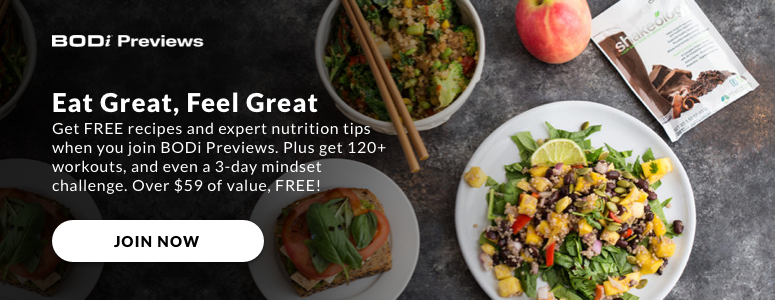7 Things to Know When Doing a Cleanse

If you’re about to embark on a cleanse, or are considering doing BODi’s 3-Day Refresh or Ultimate Reset, you’re probably wondering how your body will react.
While resetting your body, eating clean, and infusing your body with nutrients, you are undoubtedly expecting dramatic results such as weight loss and more energy.
But perhaps the most startling response to a cleanse occurs in your bathroom.
As you clean up what you put in your body, you kick start your body’s natural detoxing function: elimination. Normally, you do your thing, try not to look too closely, and flush.
But during a cleanse, poop becomes a little more … interesting.
That might be because you’re likely to have a lot more of it, so your viewing opportunities are more frequent. But this can be problematic because, the more you look, the more questions you may have.
And when weird things seem to be happening in the can, it’s hard to know who to ask. Should the poops be long or short? Should they float or sink? Is what’s going on actually normal? We asked the experts.
1. You’ll Poop More Often
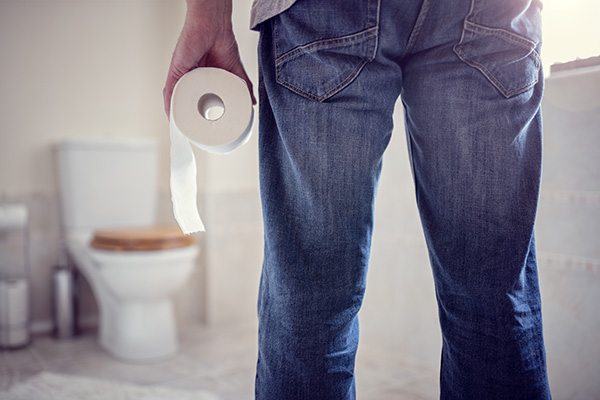
“The changes you see will vary, depending upon your former lifestyle,” explains Tianna King, R.N., a holistic nurse based in Santa Monica, California.
If you previously ate a diet high in animal protein or relied on fast food or packaged foods, and ate only a small amount of fruit and vegetables, chances are your fiber intake was on the low side.
As a result, your bowel movements were likely to be less frequent and you may have also experienced some constipation.
When it comes to elimination frequency, almost anything goes.
“Doctors typically claim that everyone’s ‘normal’ is different — one person might go daily and another might only poop once or twice a week,” says King. “This variation might be ‘normal,’ but infrequent bowel movements are not necessarily healthy.”
Ideally, the transit time for food in and out should be around 24 to 36 hours.
(You can take the beet test to check yours: Eat some beets and notice how long it takes for your poop to become tinged with pink.)
Generally, the less fiber you eat, the slower things move along.
So, one of the first things that you should notice during a cleanse is that when you start to add more fiber and water, you’ll speed things up and poop more often.
2. Bye, Bye Constipation
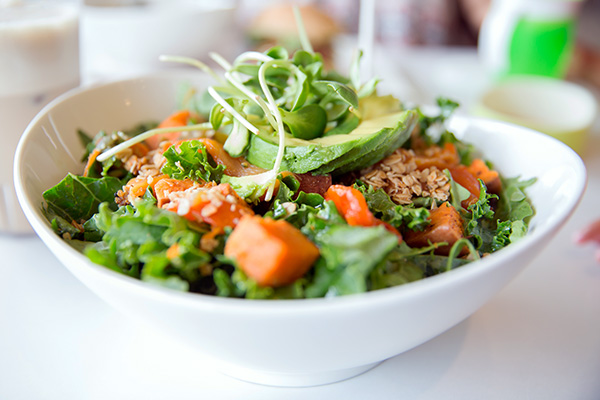
In addition to pooping more, you should find it much easier to do so, especially if you are used to some constipation.
When you go on a cleanse, you tend to dramatically increase the amount of water you take in — both through liquids and the plant foods you juice or include in your healthy meals.
Plus you tend to bump up your fiber intake from increased plant foods and sometimes from shakes and fiber supplements that may be part of the plan you are following.
“Water helps transit, and fiber creates softer and bulkier stools that are easier to pass,” explains Ankur Jain, M.D., a board-certified gastroenterologist and hepatologist based in Honolulu, Hawaii.
Although it’s hard for researchers to determine exactly how many people are constipated, one research study published in the American Journal of Gastroenterology found that 63 million adults in North America experienced difficulty pushing things along, so to speak.
The two most common causes of constipation are too little water and too little fiber.
The standard American diet typically includes meat and dairy, processed foods, and fast-food meals — all of which tend to be low in fiber. American adults get only around 15 to 20 grams of fiber per day on average, according to the U.S. Department of Agriculture.
For some perspective, the 2015-2020 Dietary Guidelines suggest that adults consume 25 to 33 grams of fiber each day. Keep in mind that this is by no means a maximum because the healthier you eat, the more fiber you’ll get.
Vegans eating a whole food plant-based diet can get 60 to 100 grams per day. Not surprisingly, studies show that vegetarians and vegans who eat more plant foods also have more bowel movements.
One caveat: Dramatically increasing your fiber intake can cause stomach discomfort if you’re not used to it. You’ll also need to make sure you get plenty of water as you increase your fiber intake.
“Fiber absorbs more water from your gut, so you need to increase your fluid intake when you increase your fiber,” recommends Jain.
During both cleanses, upping your intake of water is very important: 3-Day Refresh mixes Fiber Sweep and Vanilla Fresh with filtered water to increase water intake.
3. Poops Should Be Large and Firm, Yet Light

“A healthy stool should not be hard and rocky, ” explains Christine Gerbstadt, M.D., R.D., a physician at Walter Reed Bethesda and the author of Doctor’s Detox Diet. “It should be formed, but soft.”
While feces can vary, depending on what you eat and drink, certain shapes, sizes, and consistencies reflect better gut health.
Researchers at a hospital in Bristol, England, established a visual chart to help aid physicians and patients in determining stool status. The Bristol Stool Form Scale illustrates typical types of feces. The soft, sausage-like smooth stools in Types 3 and 4 are considered optimal.
4. Bloating, Gas, and Diarrhea Happens
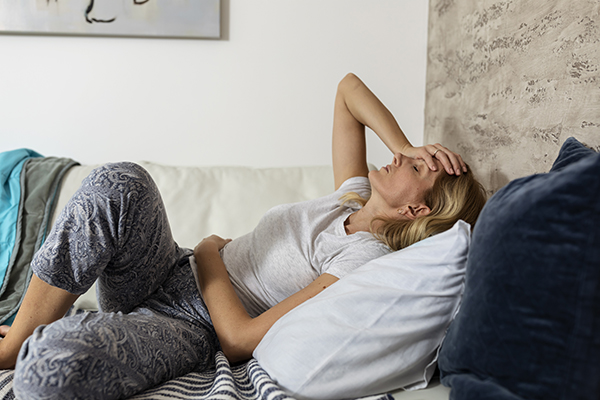
If you’ve gone from a no-veg or little-veg diet to suddenly adding lots more, your body may protest as it adapts.
“Increasing your fruits and vegetables always improves your diet quality, but if you do it quickly, you might experience unexpected bloating and gas,” explains Dr. Gerbstadt.
And the type of cleanse you do might produce slightly different effects.
“If you do a juice fast, you might actually be taking in low amounts of fiber and, coupled with the high carb content, you might experience dumping syndrome — which is basically diarrhea on steroids,” she says.
The solution? Work up to super high fiber gradually, and include smoothies over juices to keep the fiber.
5. Stool Color Can Vary
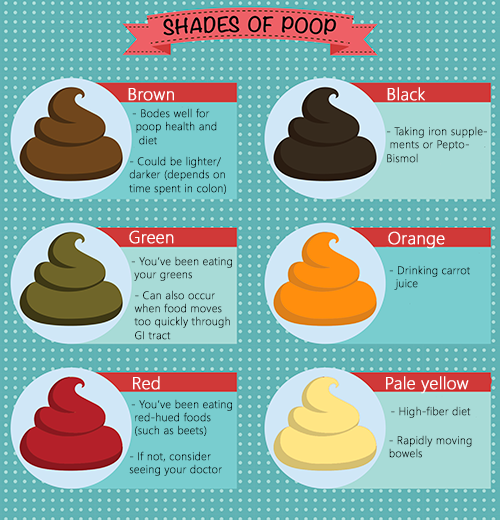
Normally, feces fall in the light-to-dark brown spectrum. But the phytochemicals in plant foods produce vibrant colors that may leak into your stools. Medications and vitamins can also cause changes in stool color.
Here’s a cheat sheet if you dare to glance into the toilet before flushing:
Green: Good on you for eating your leafy greens! Iron supplements or green food coloring can also cause a greenish tinge.
Or it could be from bile that hasn’t been broken down by your body because it moved too quickly through your intestine, which may accompany diarrhea.
Yellow: Gluten could be the culprit. But it could also be something like celiac disease or another malabsorption disorder that leaves behind excess fat.
Red: You’ve been eating a lot of beets, tomato juice, cranberries, or foods with added red coloring.
Black: Maybe you ate black licorice or took iron supplements. Pepto Bismol may also darken your feces temporarily since it contains bismuth subsalicylate.
Important! If your stools are black or red (and you don’t think it’s food-related) you should speak to your doctor since this could indicate bleeding in your GI tract.
6. Your pee may change, too
As you take in more fluids and plant foods that are high in water, you’re likely to urinate more often.
“The color of your urine may become paler, which is a good thing,” explains Gerbstadt.
Clear or pale yellow urine, as opposed to bright yellow or dark brown, reflects an adequate level of hydration.
7. Post-cleanse, Poop Should Stay the Same
If you return to the same old eating habits after a cleanse, your bowel movements may go back to what they were also.
So, rather than use your cleanse as a vacation from poor eating habits, use it as a starting point to add more whole plant foods, fiber, water, and phytochemicals permanently. That way, you’ll continue to reap the benefits of weight control, health, and more energy.

